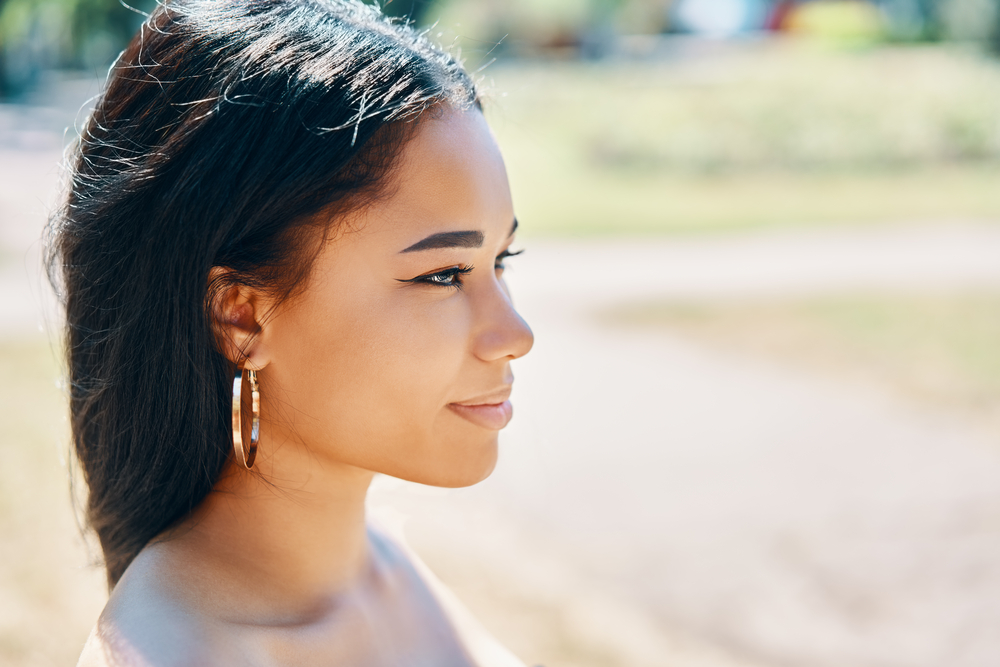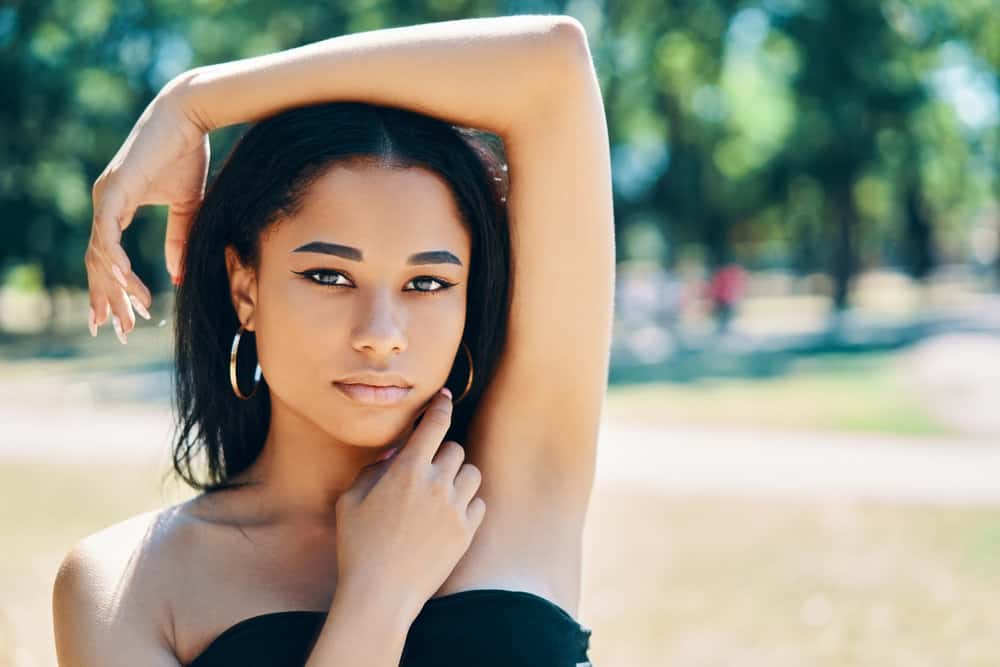
Blow dryers are one of the most popular styling tools around due to their versatility and ease of use. After all, who doesn’t love a good blowout? But is all that hot air doing more harm than good?
Does blow drying your hair damage it? If you want to find out whether your favorite blow dryer is wrecking your strands, you’ve come to the right place!
This article will examine whether or not blow-drying hair can cause damage. We’ll also walk you through how to dry your hair without damaging it, so make sure you stick around until the end.
Table of Contents
- 1 Does Blow Drying Your Hair Damage It?
- 2 How to Use a Hair Dryer Without Damaging Your Hair
- 2.1 Give Yourself a Deep Conditioning Treatment
- 2.2 Invest in a High-Quality Blow Dryer
- 2.3 Don’t Blow Dry Your Hair Too Often
- 2.4 Use a Lower Heat Setting
- 2.5 Apply a Heat Protectant Spray
- 2.6 Keep the Blow Dryer Moving
- 2.7 Air-Dry Your Hair First
- 2.8 Hold the Blow Dryer Away From Your Strands
- 2.9 Attach a Diffuser
- 2.10 Related Articles
Does Blow Drying Your Hair Damage It?
Blow-drying your hair can damage it. Blow dryers blast your strands with high heat that can dry out, denature, and break down your hair.
In addition to sucking the life out of your strands, the heat generated by a blow dryer can leave your scalp feeling dry, flaky, and irritated.
Other signs of heat damage include:
- Hair that tangles easily
- An increase in breakage, single-strand knots, and split ends
- Dry, dull strands
- Difficulty maintaining a hairstyle

Keep in mind that heat isn’t the only thing that can damage your strands. Even if you blow dry your hair with cold air, the constant tension created by the velocity of the air can damage your hair’s delicate outer layer.
The good news is that a lot of the damage depends on your blow-drying technique, so there is a way to do it safely. We’ll discuss the specific things you should do later in the article.
Is It Better to Let Your Hair Dry Naturally?
Now that you know that blow drying can damage your hair, you’re probably wondering if there’s a better alternative. We’re happy to inform you that air drying, or allowing your hair to dry naturally, is an excellent alternative to drying your hair with a hot tool.
Air drying is much gentler than blow drying and doesn’t expose your strands to high levels of heat and tension. Keep in mind that although air drying is gentler than blow drying, it is not entirely without risks.

Is Air-Drying Damaging to Your Hair?
While air drying is often hailed as a damage-free alternative to blow drying, the truth is a little more complicated. Air drying does cut down on heat and tension-related damage.
However, it can still lead to structural weakness in your strands. To help illustrate this, imagine each strand of hair as a sponge. When your hair absorbs water, the strands swell and stretch to make space for the liquid.
Then, once the water evaporates, your hair shrinks and returns to its normal size. This process of repeatedly stretching and shrinking weakens your strands.
And unfortunately, the longer your hair stays wet, the more damage that’s done to its delicate core. Because air drying is one of the slowest methods of drying your hair, it can indeed cause damage.
How to Use a Hair Dryer Without Damaging Your Hair
Despite the damage risk, blow dryers are an incredibly effective styling tool. They simultaneously dry, straighten, smooth, or curl your hair and can cut your styling time in half!
The good news is that there are a few easy ways to keep your hair healthy while you blow dry. We’ll take a look at them below.

Give Yourself a Deep Conditioning Treatment
Plan on blow drying your hair later? Before you do, take a few minutes to apply a nourishing deep conditioner.
In addition to helping ensure your hair turns out soft and shiny, deep conditioners strengthen and restore your hair. They’ll prepare your strands for the upcoming heat and give you a head start on repairing any damage that arises.
Invest in a High-Quality Blow Dryer
When it comes to keeping your hair healthy, the quality of your tools will make all the difference. While you might be tempted to choose the cheapest option, higher-quality blow dryers work much more effectively.
They heat up quickly and effectively and can reduce your drying time.
They’re less likely to generate hot spots, so you’ll have complete control over the amount of heat you expose your strands to. Additionally, many higher-tech blow dryers have performance-improving technologies built into them.

Don’t Blow Dry Your Hair Too Often
There’s no doubt that hot tools are best used in moderation. When you use a blow dryer multiple days in a row, you dramatically increase the potential for heat damage.
And as your strands grow weaker, they become even more susceptible to further damage. You’re also not giving your strands enough time to recover from the initial application of heat.
For the best results, try not to blow dry your hair more than one or two times a week.
Use a Lower Heat Setting
Fortunately, most blow dryers come equipped with a button or knob that allows you to adjust their temperature.
The higher the air temperature is, the more likely it is that you’ll damage your hair. Conversely, keeping your blow dryer on a cool or warm setting can keep your hair and scalp healthy and damage-free.

Apply a Heat Protectant Spray
Whether you plan on using a flat iron, blow dryer, or curling wand, a heat protectant is the most important product for you to invest in.
Heat protectants create a barrier between your hair and the hot tool. That reduces the amount of stress you put on your hair and helps keep your strands safe.
Keep the Blow Dryer Moving
If you’ve ever gotten your hair professionally blow-dried, you may have noticed that your stylist keeps the tool in a constant state of motion. That helps ensure no single area is exposed to too much heat.
So, when you blow dry your hair, try not to let it sit in one spot for too long. Instead, gently move it back and forth to disperse the heat evenly.

Air-Dry Your Hair First
One easy way to limit heat damage is to use a combination of air and blow drying. The longer you blow dry your hair, the more heat exposure your hair will endure.
You can dramatically shorten your blow-drying time by air-drying your hair first. For the best results, let your hair air dry until it's about 60 to 70% dry. Then, finish with your preferred blow-drying technique.
Hold the Blow Dryer Away From Your Strands
Holding a blow dryer directly against your strands exposes them to incredibly high temperatures.
So, to keep your hair safe, leave enough space between your hair and the dryer’s nozzle. Hold the dryer between six to ten inches away from your hair to dry it and four to six inches to style it.

Attach a Diffuser
Another simple way to make your blow dryer less harmful is to attach a diffuser to the nozzle. Diffusers help disperse the dryer’s airflow. So instead of blasting your hair directly, your strands are gently surrounded by the hot air.
That cuts down on drying time, reduces damage, and leaves your natural curl pattern completely intact! The only downside to diffusers is that because they don’t direct airflow, they aren’t able to straighten your hair.
- Should I Blowdry My Hair Before Braiding?
- How to Dry Hair Without a Hair Dryer
- How to Dry Hair With Towel
Although it's easy to overlook, drying your hair is a significant part of your haircare regimen. It helps you achieve certain styles and is integral to the health and integrity of your hair.
But there’s no question that blow dryers can lead to severe damage.
Fortunately, you can prevent the vast majority of the damage by making a few minor tweaks to your blow-drying routine. And we hope that this article has provided you with all the tools you need to do just that!




